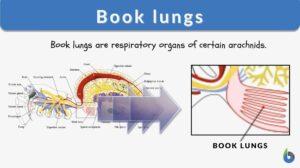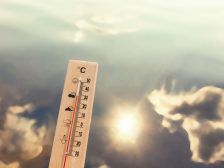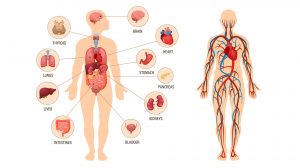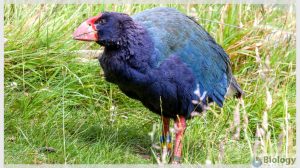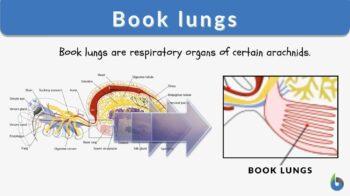
Book lungs
n., [bʊk lʌŋz]
Definition: Respiratory organ of arachnids
Table of Contents
Book Lungs Definition
Lungs are known as the organs that help organisms breathe. When we think of lungs, we think of the kind that humans and mammals possess. However, there are different kinds of lungs depending on the organism, such as book lungs.
What are book lungs? In biology, the book lungs are a kind of respiratory organ seen in arachnid arthropods (in horseshoe crabs, scorpions, and some spiders) that breathe air.
Each book lung is composed of a series of thin plates that are said to be highly vascular – which means that they are well-supplied with blood – and structured in a book-like pattern. A spider is an arachnid, so how do spiders breathe? Do spiders have lungs? Some book lung examples are those found in spiders. The book lungs in spiders function as one of the two organs they use for the arachnid respiratory system (the other organ is a trachea). Some examples of spiders that have book lungs include the Mexican jumping spider and clear jumping spider.
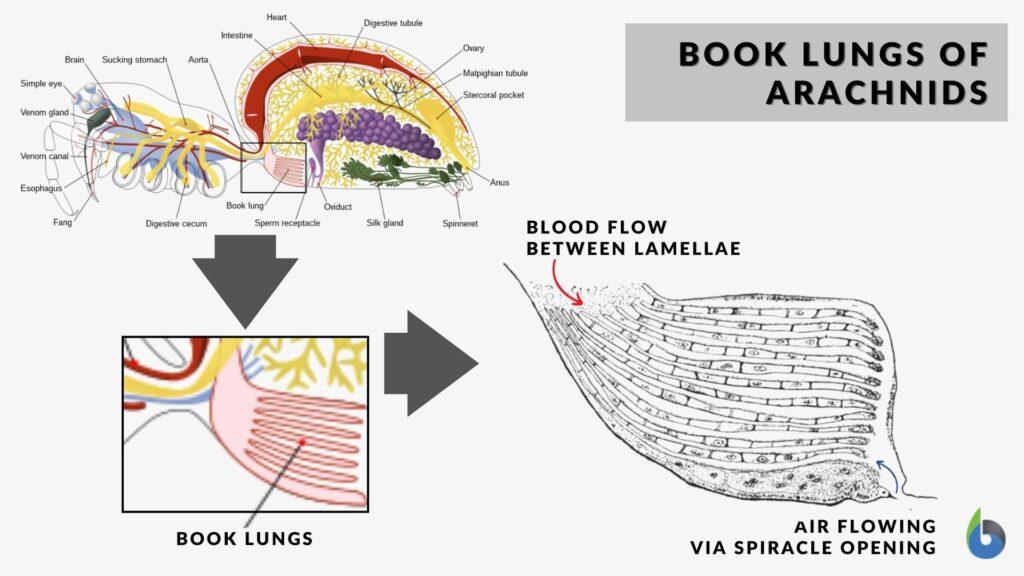
Tarantula book lungs actually are a pair of two sets of book lungs. This number distinguishes them from other spiders. Some spiders do not have any book lungs at all, instead, breathe through tracheal tubes like insects. Most other spiders only have one pair of book lungs, this is what makes tarantulas so unique in this segment. This can be watched in the vid below.
Location of book lungs in a tarantula:
Do insects have book lungs? Insects breathe through passive diffusion into and out of a network of tracheal tubes. Most spiders have tracheae as well, but their primary respiratory organs are book lungs, which consist of hollow air-filled plates surrounding the spider’s blood.
Do crayfish have lungs? Unlike arachnids that have book lungs, crayfish, which are another kind of arthropod, possess gills. The crayfish, being bigger crustaceans, breathe through their gills. These gills, which are described as fuzzy grey or brown organ, may be seen on the sides of the crayfish. It can also be seen at the base of each leg. Crustacean gills pump oxygen into the circulation when water flows past them, but they are very sensitive.
Book lungs are a rudimentary type of lung typically found in arachnids, such as scorpions and spiders, and in horseshoe crabs. The name describes the structure, as it contains many thin folds of membrane or a set of soft overlapping flaps resembling the “leaves” or “pages” of a book. Book lungs are covered up by a plate on the abdomen, through which oxygen is taken up and carbon dioxide is given off.
Structure and Function
How do book lungs work? The lungs of book lungs are not connected to the lungs of current terrestrial animals. Their name encapsulates their structure and function. As the alternating air pockets and hemolymph-filled tissue “stack” up on one another, it gives them the appearance of a “folded” book.
The number of pairs varies from one in most spiders to four book lungs in scorpions. The book lung’s unfurled “pages” (plates) are filled with hemolymph. The folds increase the amount of surface exposed to air and hence the quantity of gas exchange with the environment. Most species do not require plate motion to allow this type of respiration.
Why do these animals have book lungs? When the arachnid moves, the book lungs activate, pushing air in and out of the spider’s body. The book lungs are surrounded by hemolymph, which transports oxygen to the arachnid’s body tissues. The various ‘pages’ increase the surface area available for gas exchange. In fact, book lungs get their name because of the “pages” they possess. It is similar to that of a book which also has many pages.
Occasionally absent
When the lungs are gone, gas exchange is handled by the thin walls inside the hollow, which expand their surface area by branching into the body as narrow tubes called tracheae. Because the tracheae in certain spiders have a small number of significantly enlarged chambers, these tracheae may have developed straight from the book lungs.
Mites and harvestmen (Opiliones) and numerous other arachnids, lack book lungs and breathe only through their body surfaces or tracheae.
Arachnid Taxonomy
The Arachnida are classified into two categories based on the presence or lack of book lungs:
- Pulmonate arachnids – with book lungs, e.g., scorpions, whip scorpions, spiders.
- A-pulmonate arachnids – lacking book lungs, e.g., harvestmen, microwhip scorpions, pseudoscorpions, sunspiders.
One of the long-running debates in spider evolution is whether the book lung originated from book gills just once in a common arachnid ancestor, or whether book lungs evolved individually in various groups of arachnids as they arrived on land.
The earliest book lungs were discovered in extinct trigonotarbid arachnids preserved in Scotland’s 410 million-year-old Rhynie chert. These Devonian fossil lungs are nearly identical to the lungs of contemporary arachnids, which are completely suited to a terrestrial existence.
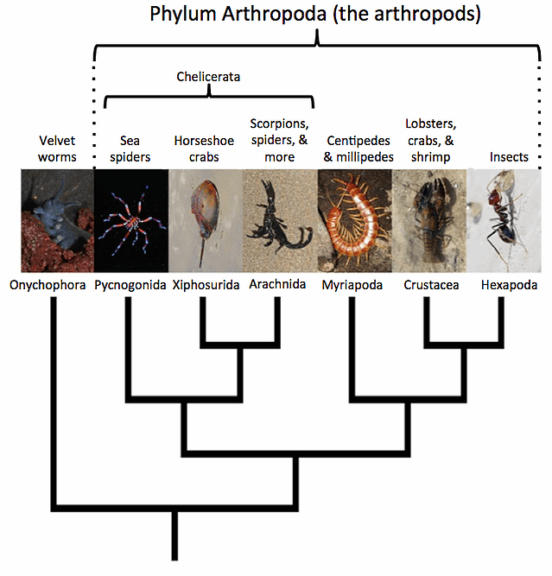
Book Gills
Book lungs are said to have originated from book gills. Although they both have a book-like form, book gills are exterior and book lungs are interior. Because book lungs form from limb buds before the buds flatten into segmented lamellae, both are considered appendages.
The marine arthropod Limulus (horseshoe crabs) still retain book gills, with the flap in front of them being the genital operculum, which lacks gills. The horseshoe crab book gills are flap-like appendages that regulate gas exchange in water and appear to have evolved from modified legs. These are the same in all other animals that possess book gills. Over 100 tiny page-like membranes, lamellae, on the interior of each appendage, resembling pages in a book, are where gas exchange occurs.
These appendages move in a cyclic pattern to pump blood into and out of the lamellae and circulate water over them. They are mostly used for respiration, although they can also be utilized for swimming in children. The horseshoe crab can survive on land for several hours if kept damp.
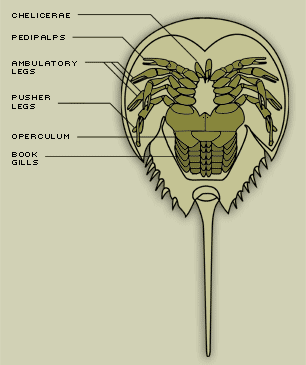
Try to answer the quiz below to check what you have learned so far about book lungs.
References
- arachnid—Respiration | Britannica. (n.d.). Retrieved April 3, 2022, from https://www.britannica.com/animal/arachnid/Respiration
- How Do Crayfish Get Oxygen? (n.d.). Sciencing. Retrieved April 3, 2022, from https://sciencing.com/crayfish-oxygen-10016579.html
- Microanatomy of Early Devonian book lungs—PubMed. (n.d.). Retrieved April 3, 2022, from https://pubmed.ncbi.nlm.nih.gov/18198139/
- Patterning mechanisms and morphological diversity of spider appendages and their importance for spider evolution—ScienceDirect. (n.d.). Retrieved April 3, 2022, from https://www.sciencedirect.com/science/article/abs/pii/S1467803910000551
- The book lungs of Scorpiones and Tetrapulmonata (Chelicerata, Arachnida): Evidence for homology and a single terrestrialisation event of a common arachnid ancestor—PubMed. (n.d.). Retrieved April 3, 2022, from https://pubmed.ncbi.nlm.nih.gov/16386884/
- What Are Tarantula Book Lungs? (n.d.). The Tye-Dyed Iguana – Reptiles and Reptile Supplies in St. Louis. Retrieved April 3, 2022, from https://thetyedyediguana.com/blog/what-are-tarantula-book-lungs/
©BiologyOnline.com. Content provided and moderated by Biology Online Editors.

